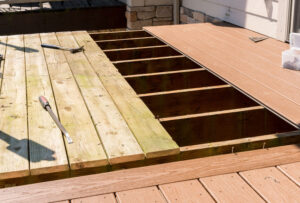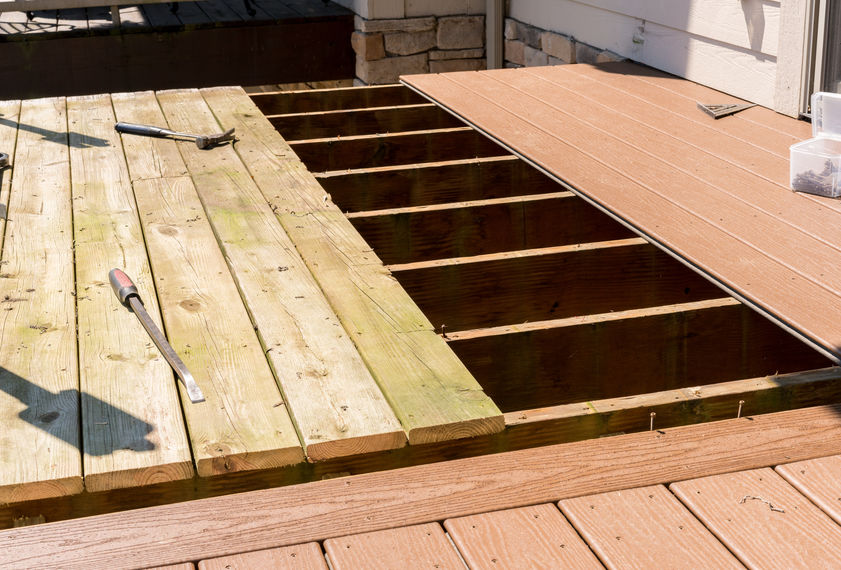If you are planning to do some DIY deck repair projects, you need to be aware of a few things. These include the cost of the materials, the tools needed, and pest problems. Also, you will need to choose whether to hire a contractor or do the job yourself. Read on to find out more! You might find it easier to do it yourself than you think.
The costs of deck repair are as varied as the type of wood you have. Some decks are simple and can be repaired yourself for less than $75. Common repairs include replacing rotten floor slats and re-securing a loose handrail. However, if you want your deck to retain its structural integrity, hiring a professional like Deck Repair Charleston SC may be a better option. They can integrate the repair into the overall design and prevent the need for further repairs. Similarly, replacing rusty screw heads may help to prevent rust staining and to preserve the stability of the structure. However, it’s important to get this work done before the screws start to loosen the structure.
Termites can eat away at the wooden parts of a deck, so regular inspections are crucial. However, the cost of termite treatment is relatively low if you catch the infestation early. However, if you don’t spot the problem, the costs can easily increase to several thousand dollars. Fortunately, there are some ways to prevent this from happening, including hiring a professional pest control company.
Costs of deck repair vary significantly depending on the size of the damaged area and the complexity of the repair. Stairs and railings take longer to repair than the rest of the deck and can add a considerable amount to the overall costs. While replacing a single piece of wood may cost as little as $40, replacing a larger section of wood, such as a side stringer or footing, can cost from $225 to more than $600.
Crack repairs are another common expense for homeowners. These repairs can cost anywhere from $150 to $500, depending on the material and size of the crack. Cracks in hardwood require more time to fix than those in lighter woods. They may also require epoxy or resin, or sanding. If you have a deep crack in your deck, your costs will be higher.
Costs of deck repair also depend on the condition of the deck and age of the deck. If the deck is in good condition, repairing it might be more affordable than a full replacement. However, you should consider whether the deck is worth saving or replacing. For instance, if the support post is in a stage of advanced rot, it may be more sensible to replace it rather than repair it with polymer.
If you’re planning on doing some repair work on your deck, you’ll need a number of tools. One of the essential tools is a tape measure. This tool can be used for a variety of tasks, from removing loose planks to removing nails. Other tools you’ll need include a circular saw and a jigsaw. A shovel can also help you move soil, and a post-hole digger is useful for digging deeper holes for posts. Some tools will be useful for cleaning and repairing your deck, including a sander for smoothing wood.
You can also use a stud finder to find the joists underneath the deck boards. Another tool to help with this process is a Walabot 3D imaging tool, which pairs with your Android phone and shows you the exact location of support joists. Once you’ve mapped out where the joists are, you can begin working on repairing the deck boards. Before you begin any repair work, however, make sure to mark the damaged boards and nails. You can also keep the existing screws or nails in place so that you can avoid wasting too much time on a faulty repair.
Once you’ve done the necessary repairs, you can begin replacing damaged boards. For instance, you may have to replace boards that are warped or have holes in them. You’ll also need the right tools for applying a new stain. Thankfully, the majority of deck repair work is relatively simple to do with the right tools.
Before you begin repairing your deck, make sure you take time to inspect the wood for cracks. Small cracks can easily be repaired with wood preservative, but larger areas may require structural member replacement. You’ll also need to check for rot on the stairs and railings. Also, be sure to make sure the railings are sturdy enough to support a concentrated load of 200 pounds.

